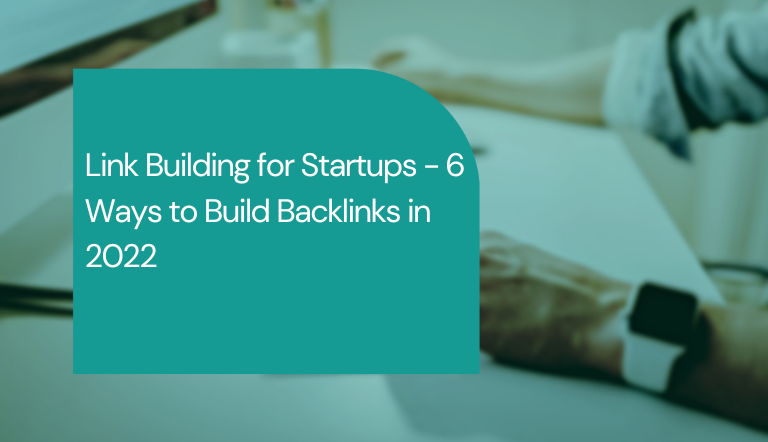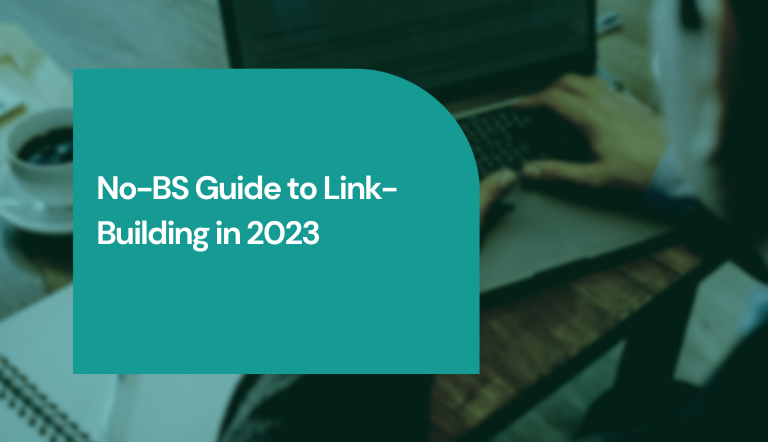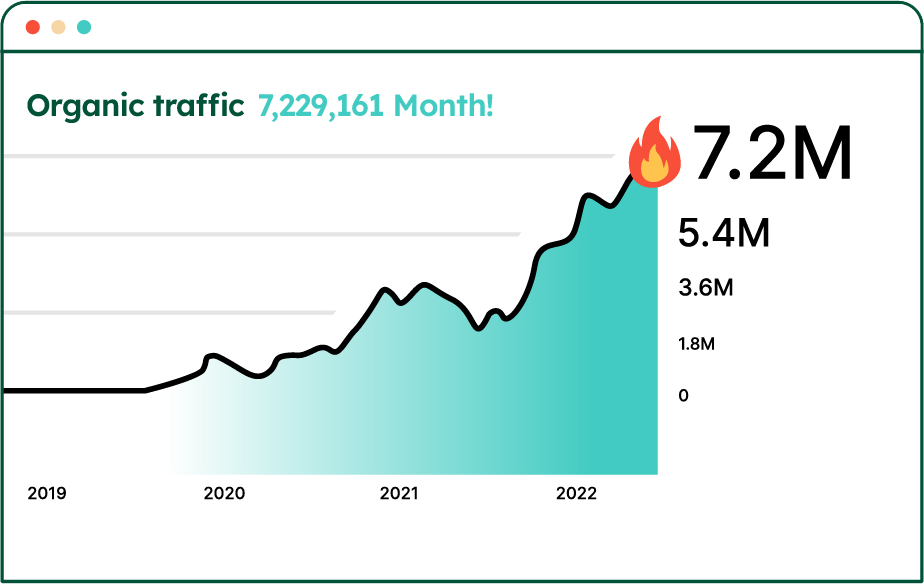As a startup, you’re always looking for ways to hack your marketing processes and get the best possible results as soon as possible.
Link building for startups, though, can be a tough nut to crack.
The process is very much a grind. You have to reach out to hundreds, maybe even thousands, of prospects every month if you want to build a dozen backlinks to your site.
Sometimes, you’ll even have to pay sponsorship fees to the website owners for each backlink published.
This begs the question – what are the most effective ways to build backlinks for a startup?
In this article, we’ll answer that very question!
Read on to learn how to:
- Use HARO to Get Press Mentions (and Build Backlinks)
- Get 10+ Backlinks from Each Guest Post You Publish
- Create Content That Builds Links on Autopilot
Let’s get started!
Link Building for Startups – 6 Effective Backlink Building Strategies
#1. Scale Up Your Guest Posting Ops
You probably already know how guest posting works, but in case you don’t, here’s the gist:
- Find blogs in your niche. Create a list of all the popular (and not-so-popular) blogs that cover topics related to your business.
- Reach out with a personalized pitch. Get in touch with the website’s manager (usually the founder or head of content) and pitch a guest post that you think would fit their blog.
- Hire a freelance blog writer to create the guest post. Make sure the post fits their guest post guidelines if they have any.
- Rinse & repeat.
But those are just the basics – the question you probably have is this:
How can you do guest posting at scale without having to spend a ton of money and time?
Here’s our strategy:
Build relationships with founders of startups in adjacent niches, and make a deal with them. For each guest post that they publish on a 3rd-party website, they include a link to your site and you do the same for them.
This way, for each guest post you get published, you’re going to get another from your partner’s guest posting efforts.
Win-win!
Link-building just not your thing? Let us do it for you! We’ve built hundreds of quality backlinks for our clients just last year!
#2. Do Link Exchanges (Safely)
It’s no secret that Google isn’t fond of link exchanges.
According to their Webmaster Guidelines, link exchanges are considered to be “link schemes” which, if discovered, are likely to penalize your website.
Fortunately, though, there IS a way to do link exchanges safely:
By using the ABC link exchange method.
The gist of this is pretty simple. You find 2 websites willing to collaborate with you on link-building, and you do the following:
- Site A links to Site B
- Site B links to Site C
- Site C links to Site A
This way, everyone gets a backlink, and there’s no evidence of a link exchange ever taking place.
#3. Take Advantage of Inbound Backlink Requests
If you’ve had a blog for a while now, chances are you’re already getting dozens, or maybe even hundreds, of outreach emails asking for backlinks every month.
And, most probably, you just completely ignore them.
Here’s a rock-solid alternative:
Instead of ignoring outreach emails, get back to them and offer an exchange.
You’re going to give them that backlink they’re asking for, but in exchange, they’re going to link back to your website from a third-party blog they publish a guest post on sometime in the future.
Win-win!
They get their link, and you get a free backlink with 0 outreach work required.
#4. Create Press-Worthy Resources
This one’s going to be hard to pull off, but if you manage to make it work, you’ll be able to build dozens of backlinks in a single campaign.
Here’s what you need to do:
- Create an interesting online resource, something that could warrant media coverage.
- Reach out to journalists who’ve covered topics associated with your online resource, and ask them for coverage.
If you have any proprietary data about your users, this useful resource can be about that.
For example, back in the day, OkCupid used to create research studies based on their data on their user’s dating preferences.
This got them a ton of coverage on popular media, which of course, resulted in a ton of backlinks.
Some other digital PR campaigns that we think are very impressive include:
- Lawn starter, a lawncare startup, created a resource on the best BBQ cities in America.
- A personal finance startup, MoneyGeek, published a study on the 26 US cities where buying a home is no longer affordable.
- Ken Broley Art Supplies created an infographic that showed the most Googled artist by country. This got them featured in CreativeBloq, designboom, and other websites.
#5. Create Link-Bait Content
Some types of content attract backlinks better than others.
If you wrote a generic blog post on, say, “top 5 benefits of link building,” there’s a good chance no one would link to it, just because it’s simply not interesting and the topic’s been covered time and again.
Some types of content that just attract links on auto-pilot are as follows:
- Statistics articles. Any article that is aimed to rank for the “[topic] + statistics” keyword. When a content writer is working on a blog post, they’re most likely going to need some quality sources. If you rank among the top three results with your statistics article, chances are they’ll link to you. This type of content is the most likely to drive you editorial backlinks.
- Trend articles. The same concept as with the statistics article applies here. Content writers look up trends to find sources for their articles and are likely to link to you.
- Useful micro-SaaS tools. A small nifty tool that solves a specific problem. HubSpot’s website grader is a great example of this. It’s a simple tool that grades your website’s performance. Simply because the tool is so useful, it managed to get a ton of mentions (and backlinks) online.
- Epic experience-backed articles. Here’s one thing that most SEO articles have on the internet: they’re written by SEO content writers, for the sake of SEO. They don’t have any interesting expert insight into an industry. So here’s your opportunity: use your past experiences to create content that’s not for SEO, but aimed at getting you shares and reads.
Is writing not your thing? You can always outsource your content writing to pros!
#6. Use HARO to Get Press Mentions (and Backlinks)
HARO, or Help a Reporter Out, is a platform that matches journalists with sources.
The gist of it is pretty simple:
You register as a source and you start getting emails with information on what journalists are looking for several times a day.
If you have something to contribute to a given topic, you can reach out with your pitch.
Here are some tips on how to do HARO right:
- Speed matters. HARO journalists get hundreds of pitches per inquiry. If you submit yours as early as possible, you’re a lot more likely to get it published.
- Give good insight. Your answers should not be generic or bland. The reason journalists use this platform is to find expert insight and if your answer doesn’t have it, then you’re likely not getting picked.
- Be concise. You’re sending a small pitch, not a 500-word blog post. Keep things brief and to the point.
- Format your email right. To make your email easy to skim, split it into three headers:
- My Answer (aka your pitch)
- About Me (a 1-2 sentence description of who you are and why you’re an expert)
- Additional Info (a link to your headshot, link to your website, and anything else that might be relevant)
How is Link Building Different for Startups?
Now that we’ve covered the important stuff, let’s talk about theory.
Is link building different for startups, and if so, in what way?
We believe that it is.
Given, there are different types of startups at different stages with different budgets so this is going to be a bit of a generalization.
Regardless, here’s how we think link-building for startups can be different:
- Limited budget. If you’re at a seed stage, your budget is probably limited. As such, you might want to avoid paying for backlinks and stick to more creative techniques.
- Interesting data. Depending on your niche, you might have some interesting data from your users, and you can use that to spin interesting stories that get you media coverage.
- Variance by niche. Again, depending on your niche, link building might look very different. If you’re in B2B, tactics like guest posting and link exchanges work better. If you’re B2C, simply sponsoring blogs for link placements might be the easiest route sometimes.
- Lots of opportunities for link exchanges. If you’re the networking type, you can exchange links with startups in adjacent niches. If you have a huge network, this can work extremely well.
Just not managing to get link-building to work? You can always outsource it to a team of link-building pros!
How to Evaluate Backlinks
Not every backlink can have the same impact on your website, and as such, you need to know how to evaluate backlinks.
This can save you from accidentally building low-quality backlinks and getting your website penalized.
Here’s what to look at when deciding if a link is worth it:
- Website topical relevance. The site you’re getting a link from should be topically related to yours. E.g. if you’re in the personal finance niche, a good backlink would be from a personal finance blog.
- Page topical relevance. The page you’re getting a link from should also be related to the page it’s linking to. If you’re an accounting SaaS and you get a backlink from a cooking blog, it won’t count for anything.
- Website rankings. What’s a better indicator of whether a website is in Google’s good graces than its rankings? If a site is ranking well, then you’d benefit from a link from them.
- Page metrics. If the page you’re getting a backlink from has backlinks on its own, that’s another definite win.
- Whether the site is a link farm. A link farm, in a nutshell, is a site that is built exclusively to sell backlinks. Since they have a TON of outgoing backlinks (and almost no inbound ones), they have almost no impact on your website.
- If the backlink is do-follow. No-follow backlinks don’t impact your site’s rankings. The most common types of no-follow links are forum backlinks, blog comment backlinks, Fiverr backlinks, and web 2.0 backlinks.
How Long Does Link-Building Take?
This one’s important, so we thought we should cover it too.
Link-building, and SEO in general, is a long-term marketing strategy.
If you’re expecting to rank in just a month or two of link-building, then you’re just wasting your money and time.
If you already have decent SEO content on your website, you can expect link-building to drive results sometime within 6 months, depending on how many backlinks you build per month.
If you don’t have any SEO base, though, there’s a good chance you’ll need around a year plus to start driving link-building results.
Conclusion
And that’s a wrap!
Hopefully, we’ve armed you with all the tools you need to start building backlinks for your startup.
Now, all that’s left is execution! Try out the techniques we’ve covered in this article and upgrade your website’s rankings.





